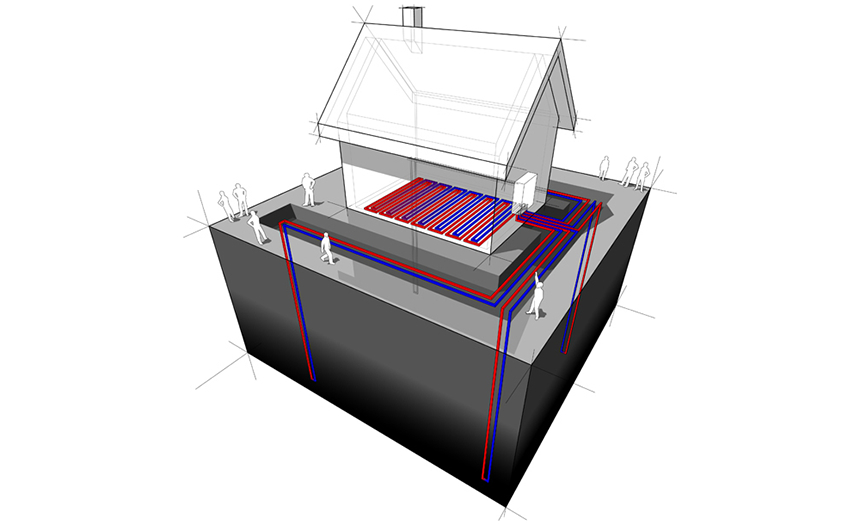Ground Source Heat Pumps – What You Need to Know

Ground Source Heat Pumps (GSHPs) provide the ability to make use of the natural heat below the earth. This heat can be used in place of traditional boilers to heat radiators, underfloor or warm air heating systems and hot water.
As the underground temperature remains relatively constant, Ground Source Heat Pumps can be used throughout the year to assist with the heating of homes and businesses providing a cost-effective, energy saving solution.
- How does a Ground Source Heat Pump work?
- The benefits of Ground Source Heat Pumps?
- How green is a Ground Source Heat Pump?
- Is a Ground Source Heat Pump suitable for me?

How does a Ground Source Heat Pump work?
Ground Source Heat Pumps are made up of a network of underground water pipes (the ground loop) and a heat pump that is situated at ground level. A solution of water and antifreeze is pumped around the ground loop which absorbs the natural heat from below the ground. The pump then increases the temperature, using its incorporated evaporator, compressor and condenser, as it transfers the heat from the water to the heating system.
Pipework is most commonly laid horizontally, around two meters below the ground’s surface, however, in areas where space is limited, it can be positioned vertically. Boreholes can be located virtually anywhere that ground conditions permit and can be built on or landscaped over, providing access is maintained.
Ground Source Heat Pumps are capable of increasing the temperature from the ground by between one and a half and four times the the original temperature, providing enough heat to heat a radiator, hot water or an under-floor heating system. However, in some cases conventional systems are also installed for peak heating demands and to provide a backup system.
Heat pumps use electricity to raise or lower the temperature of the liquid composition but can be three or four times more efficient than conventional electric heaters.

What are the benefits of Ground Source Heat Pumps?
There are a number of benefits to using Ground Source Heat Pumps:
- Once installed Ground Source Heat Pumps are easy to run and maintain.
- Ground Source Heat Pumps create less CO2 than conventional heating systems thus helping to reduce your carbon footprint.
- They can reduce heating costs and could save up to 10-20% per year depending on the heating system that is being replaced.
- They can provide low carbon cooling.
- Ground Source Heat Pumps can provide income through the government’s Renewable Heat Incentive Scheme.
- They are not dependant on external fuel sources.
- Reduced energy bills, carbon savings and reduced maintenance costs often offset the initial capital investment.

How green is a Ground Source Heat Pump?
A Ground Source Heat Pump requires electricity to power the pump and is therefore not always a completely carbon free solution. However, depending on the heating system that is being replaced, GSHPs can still greatly reduce your carbon footprint by using a renewable, natural source of heat.
Low carbon energy sources such as solar and wind turbines can also help to balance the electricity used by Ground Source Heat Pumps.

Is a Ground Source Heat Pump suitable for me?
Ground Source Heat Pumps are suitable, and offer potential energy saving opportunities, for a wide range of applications.
They work best when integrated as part of a low-carbon design and can make a big contribution to carbon savings when operated correctly.
For more information, or to discuss if a Ground Source Heat Pump is suitable for you and/or your business, please feel free to get in touch either by telephone on 01293 251 350 or by email to info@2ea.co.uk.


